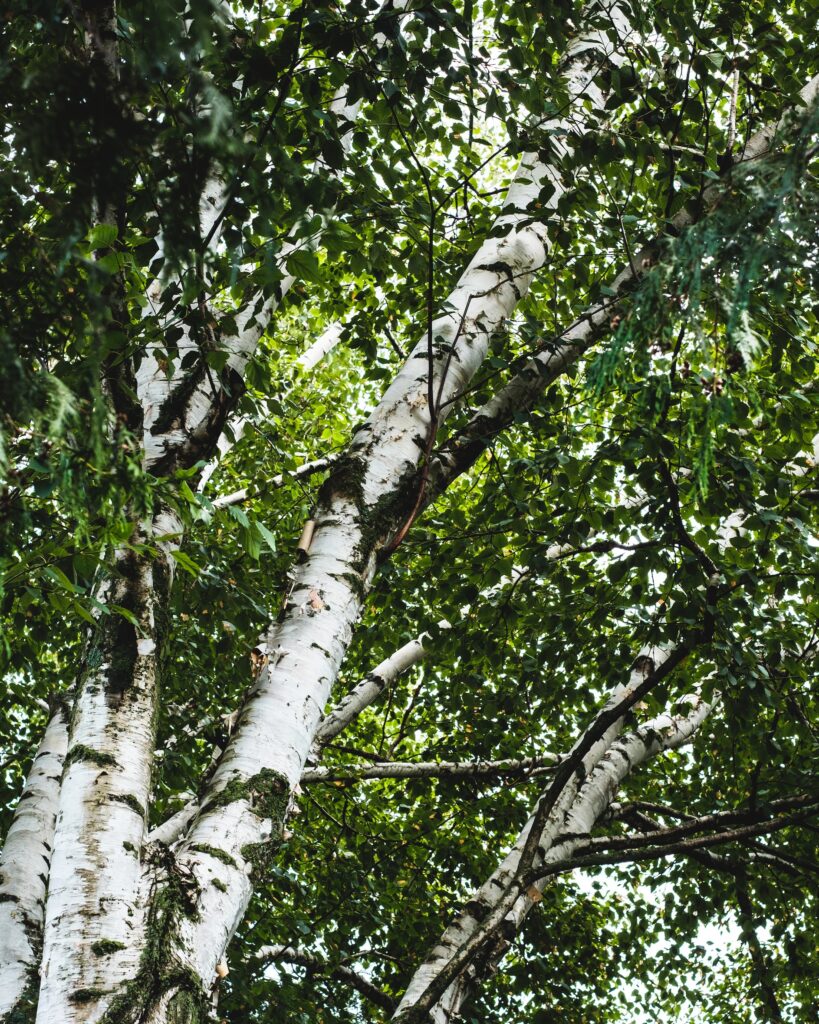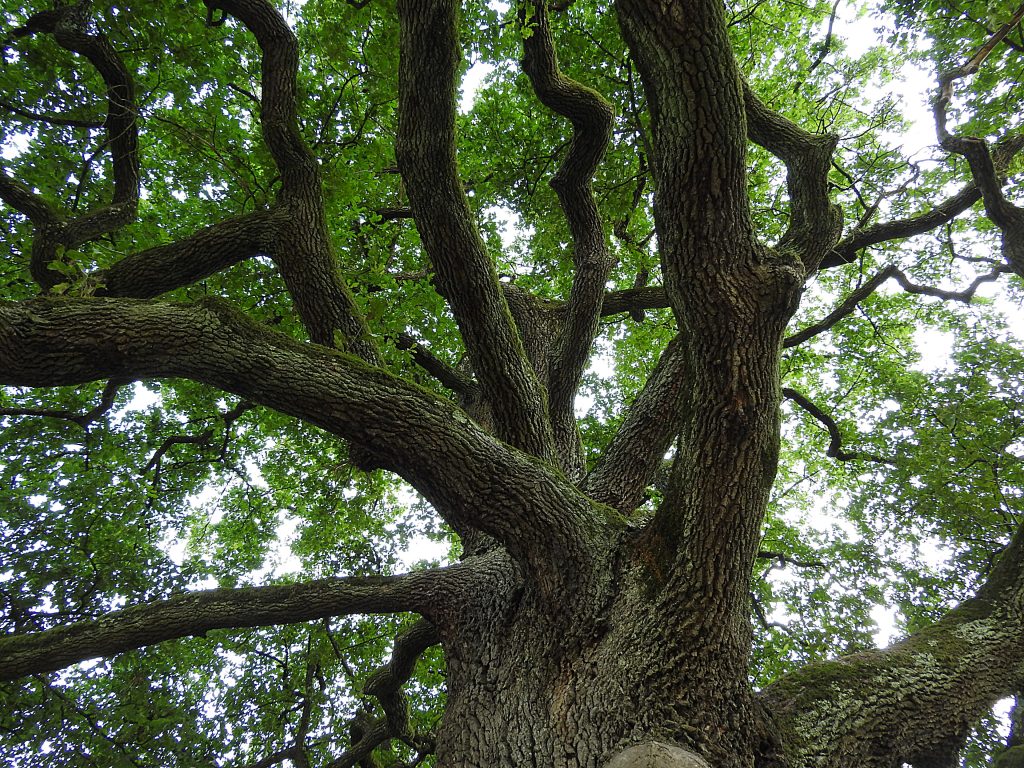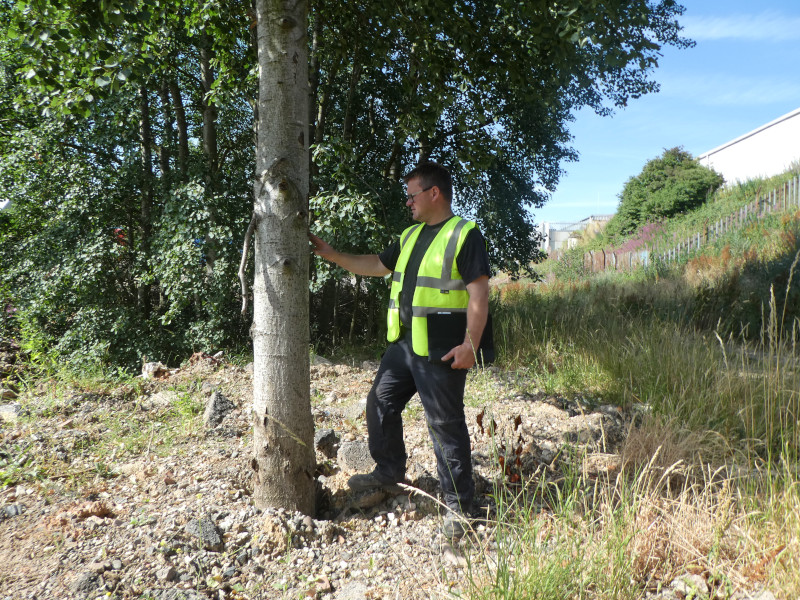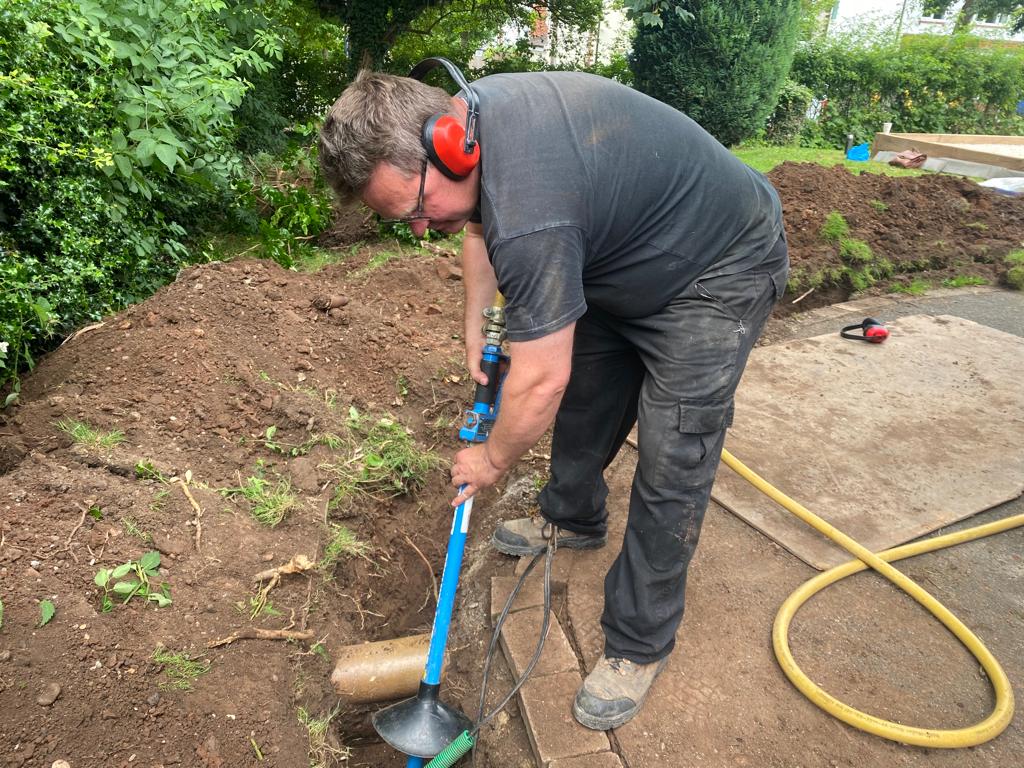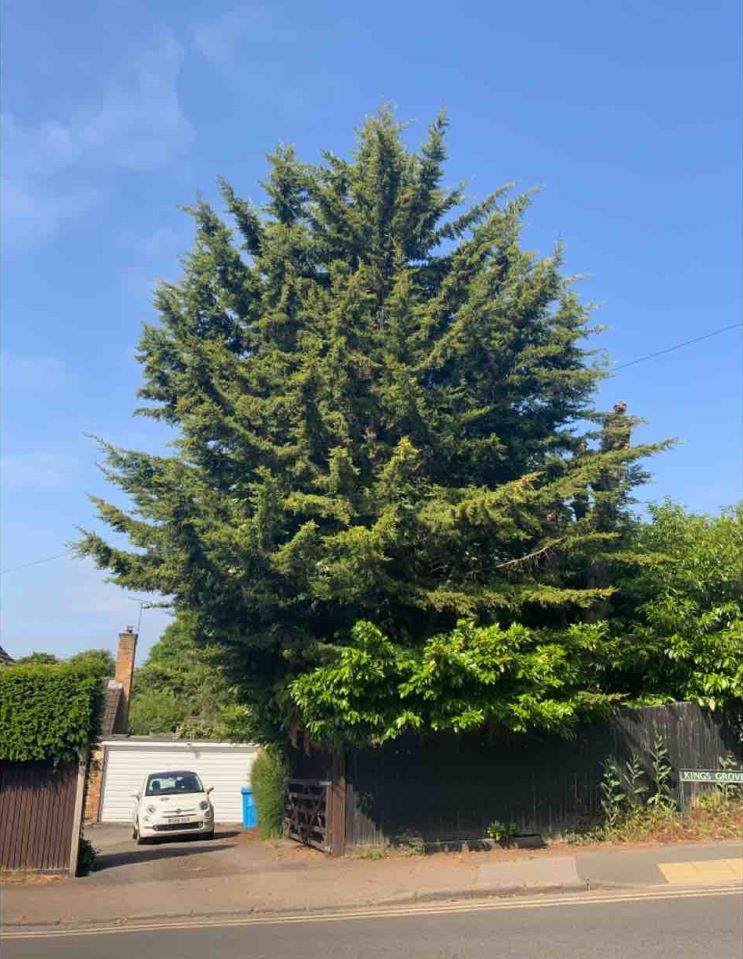Ecologically Valuable Trees
Ecologically valuable trees contribute significantly to the aesthetics and value of the landscape. They can also contribute positively to surrounding wildlife and environment.
Here are some of our favourite ecologically valuable trees:
Oak:
Oak forests support more life than any other native forest, they host hundreds of insects and supply many birds and mammals with an important food source. In Autumn, their leaves break down and form a rich mould beneath the tree, supporting fungi and invertebrates. Crevices in the bark make perfect nesting spots for birds such as the pied flycatcher and marsh tit. Oak trees are also home to bats which roost in old woodpecker holes or underneath loose bark.
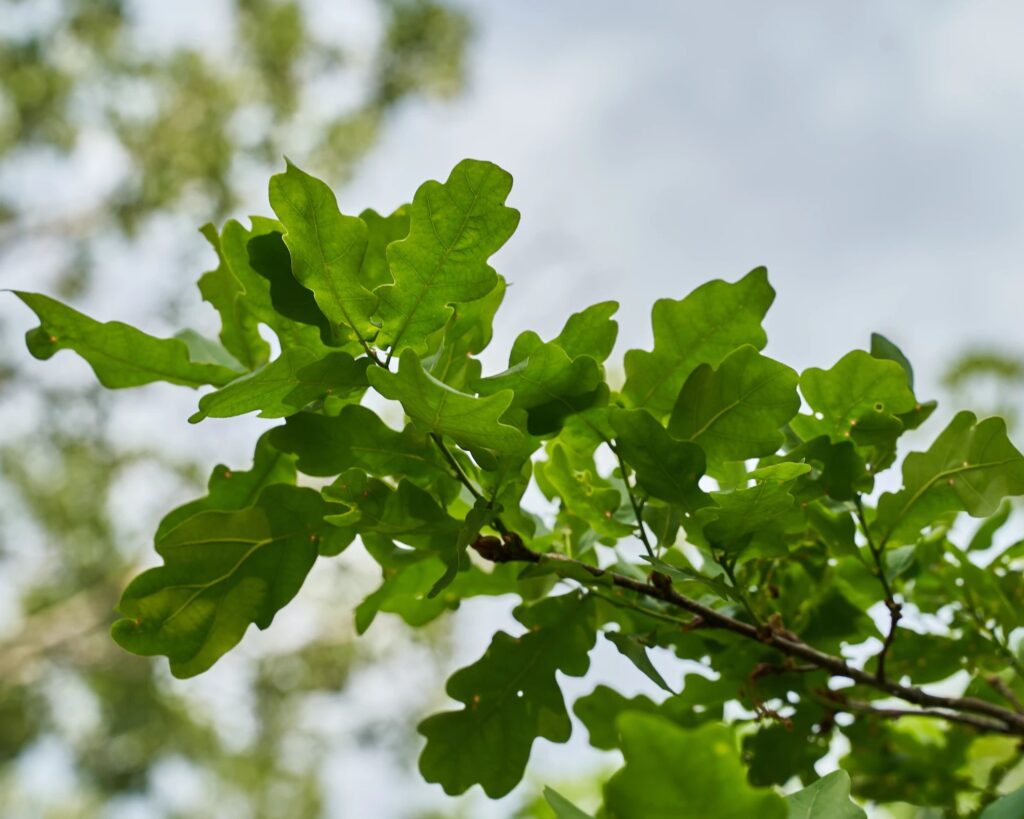
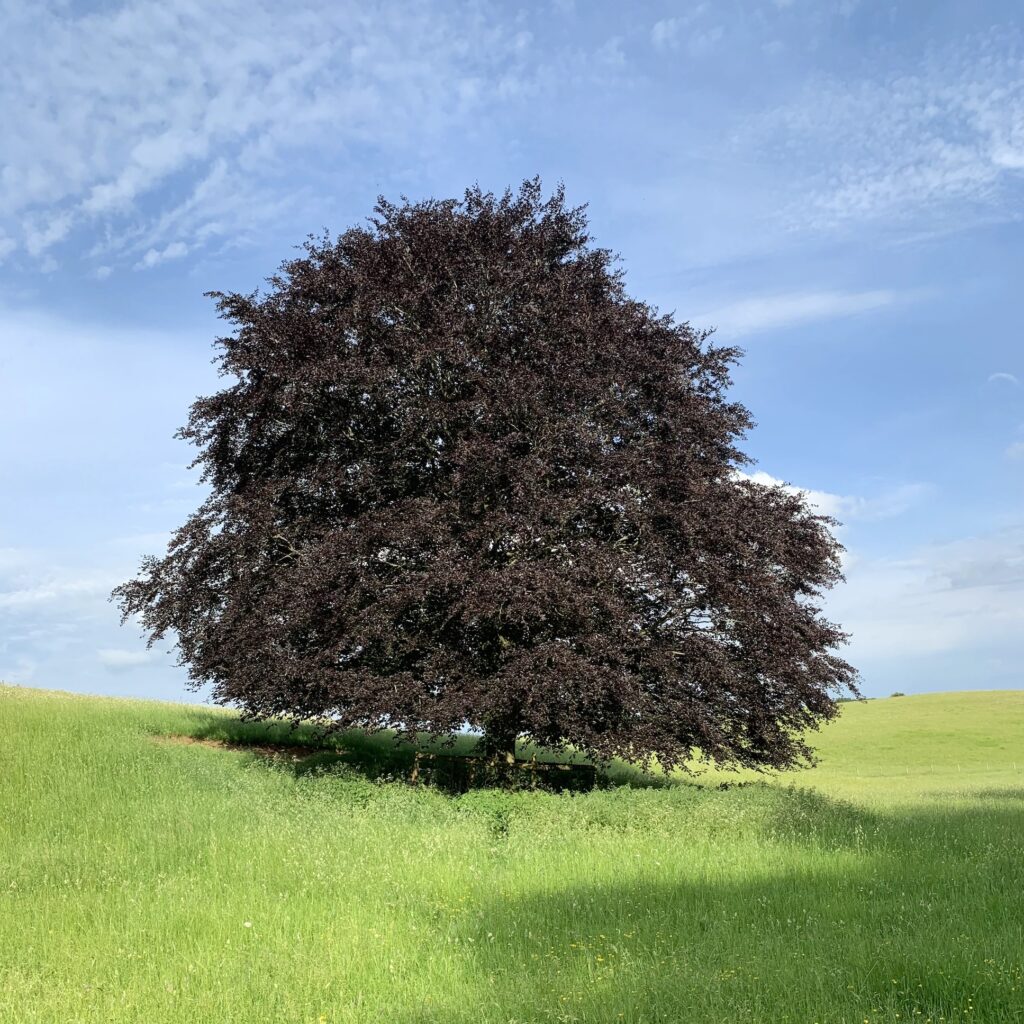
Copper Beech:
Copper (Purple) Beech are cultivated from common beech trees. They can grow to heights of more than 40m. Their bark is smooth, thin and grey, often with slight horizontal etchings. Their twigs are slender and resemble a zig-zag shape. In fact, their name comes from their copper-coloured leaf buds, they are torpedo-shaped and grow up to 2cm long with a distinctive criss-cross pattern.
Hazel:
Hazel is monoecious, meaning both male and female flowers are found on the same tree. However, they do not self-pollinate; Hazel flowers must be pollinated by pollen from other hazel trees. The yellow male catkins appear before the leaves and hang in clusters from mid-February. The female flowers are tiny and bud-like with red styles; once pollinated, they develop into oval fruits that mature into a nut with a woody shell.
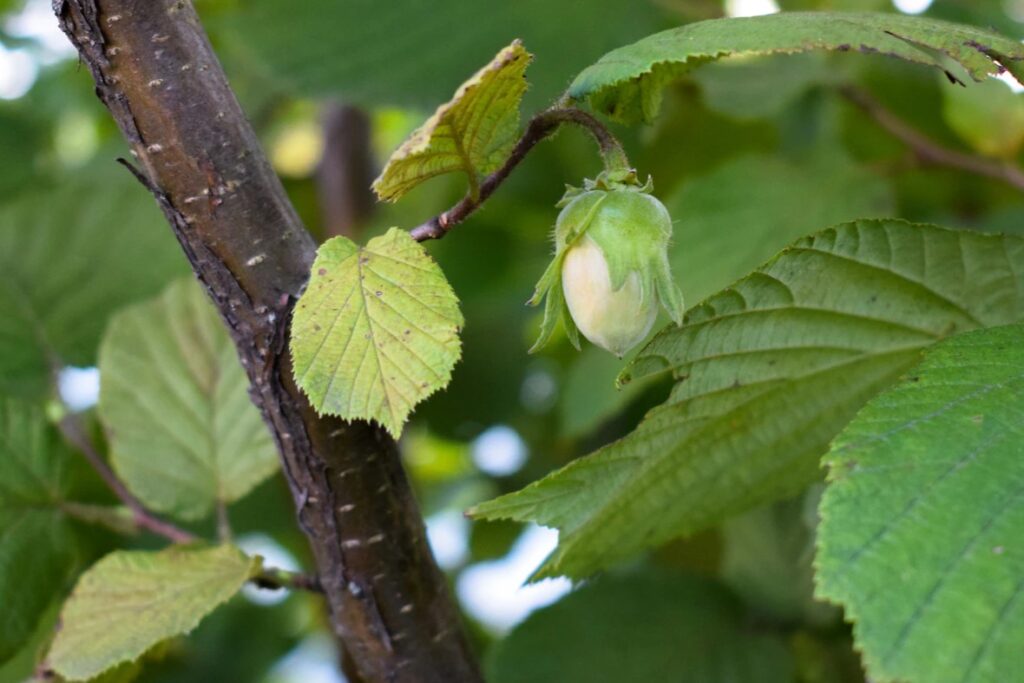
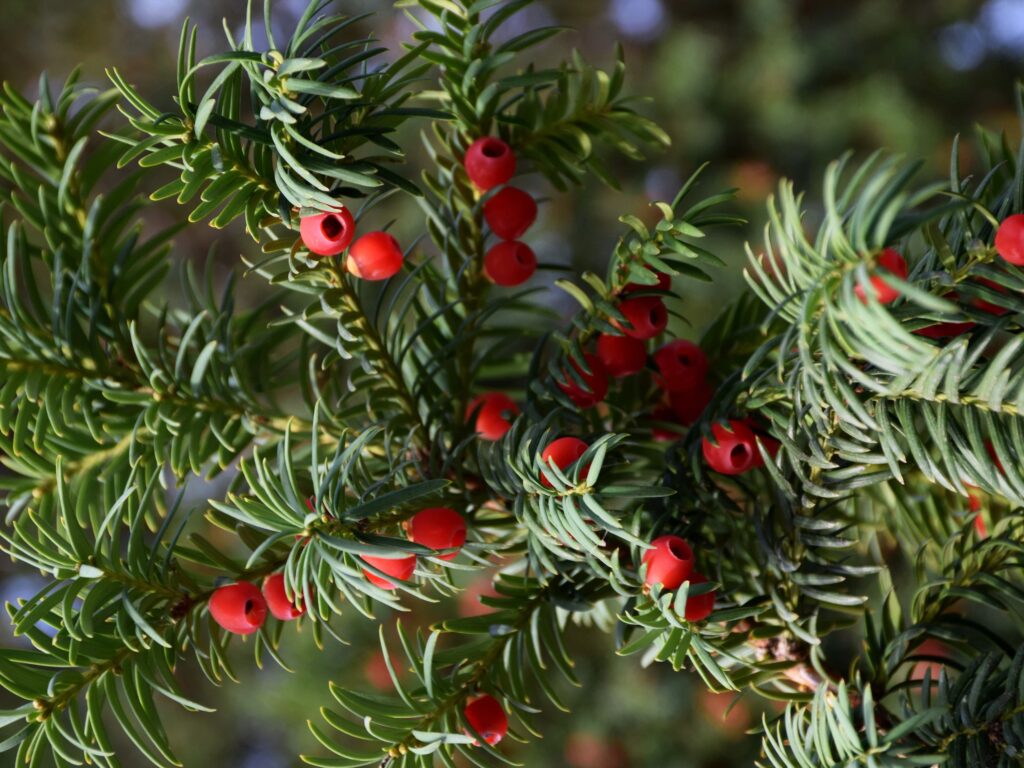
Yew:
The common Yew (Taxus Baccata), is one of the longest-lived native species in Europe. However, unlike many conifers, it does not bear its seeds in a cone. Instead, each seed is enclosed in a red, fleshy, berry-like structure known as an aril which is open at the tip. This berry is eaten by birds and small mammals and the leaves are eaten by caterpillars of the satin beauty moth.
Larch:
This fast-growing tree is also a favourite of squirrels, birds and moths. The European Larch (Larix Decidua) was introduced over 400 years ago. Therefore, it was one of the first trees brought to the UK in the 17th century for its timber. It has pale creamy-brown sapwood and red-brown heartwood that is hard and rot-resistant. Mature Larch trees can grow to 30m and live for 250 years. It is fast-growing tree that is cone-shaped when young and becomes broader with age.
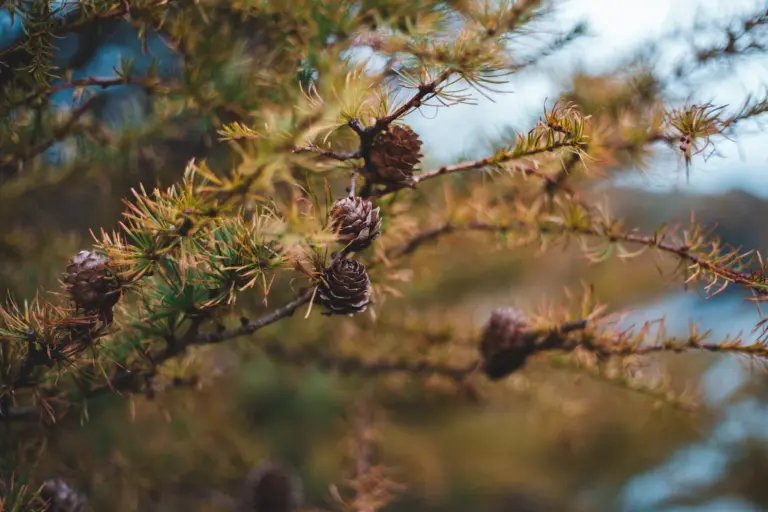
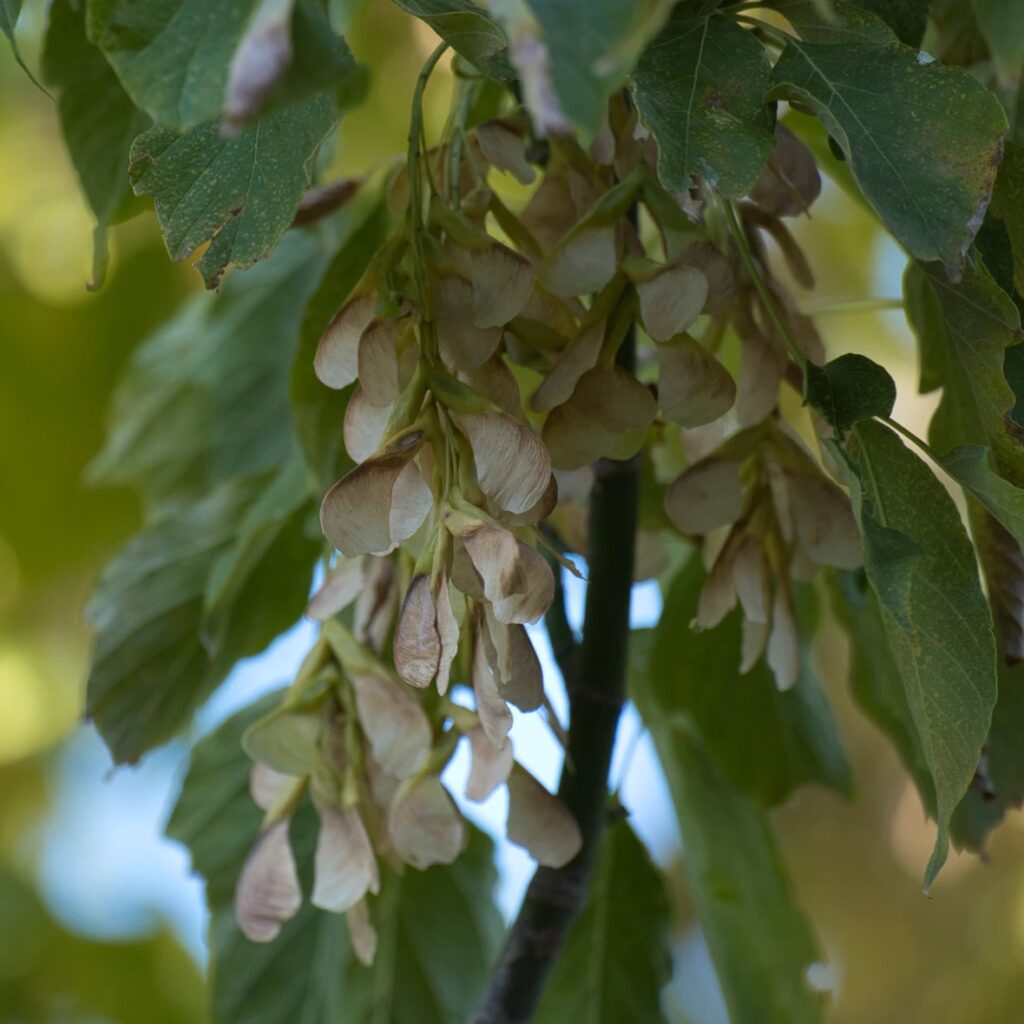
Sycamore:
The Sycamore’s winged seeds are often known as ‘helicopters’ and are used in flying competitions by children on the playground. These broadleaf trees can live for 400 years and grow to 35m. The bark is dark pink-grey and smooth when young, but as the tree matures, it becomes cracked and develops small plates. Sycamores are a great source of food and shelter for wildlife. They are particularly loved by aphids and, therefore, a variety of their predators, such as ladybirds and hoverflies. Caterpillars eat the leaves, and the flowers provide a good source of pollen and nectar for bees and other insects, and birds and small mammals eat the seeds.
Silver Birch:
Silver Birch is a common medium-sized deciduous tree with silver-white bark, making it striking. They can reach up to 30m in height, forming a light canopy with elegant, drooping branches. The white bark sheds tissue-paper-like layers and becomes black and rugged at the base. As the trees age and mature, the bark develops dark diamond-shaped fissures.
